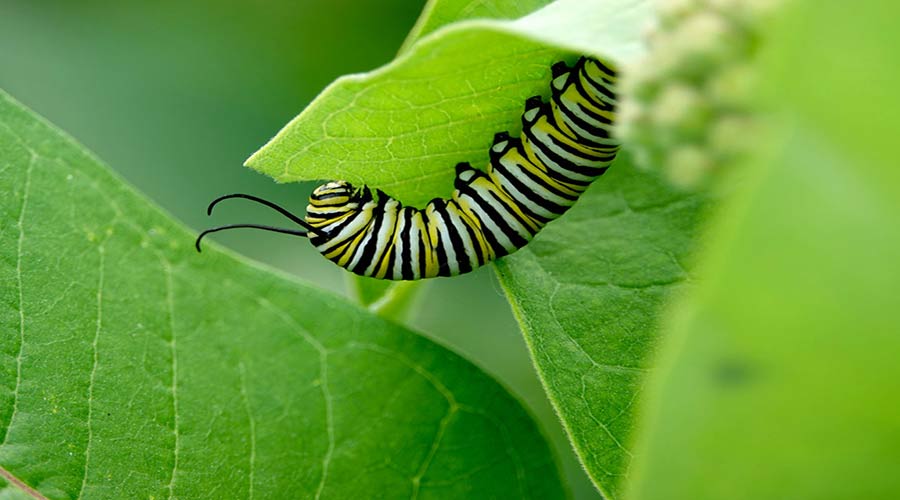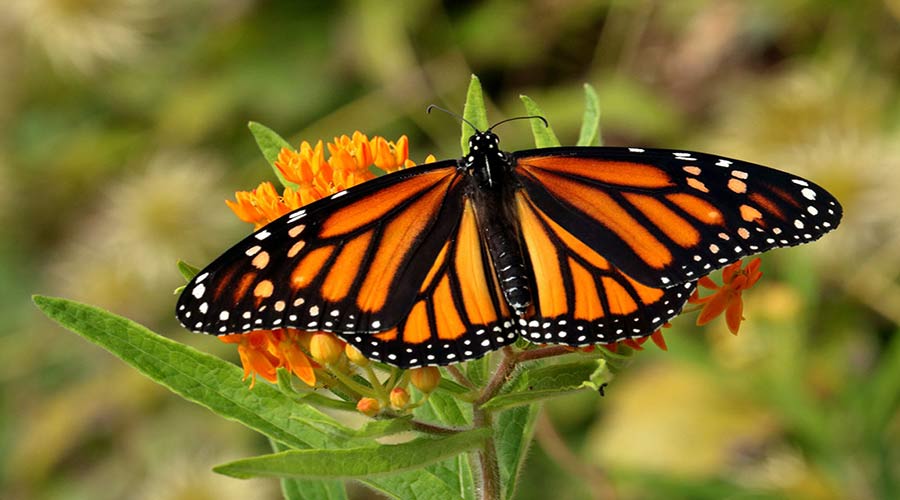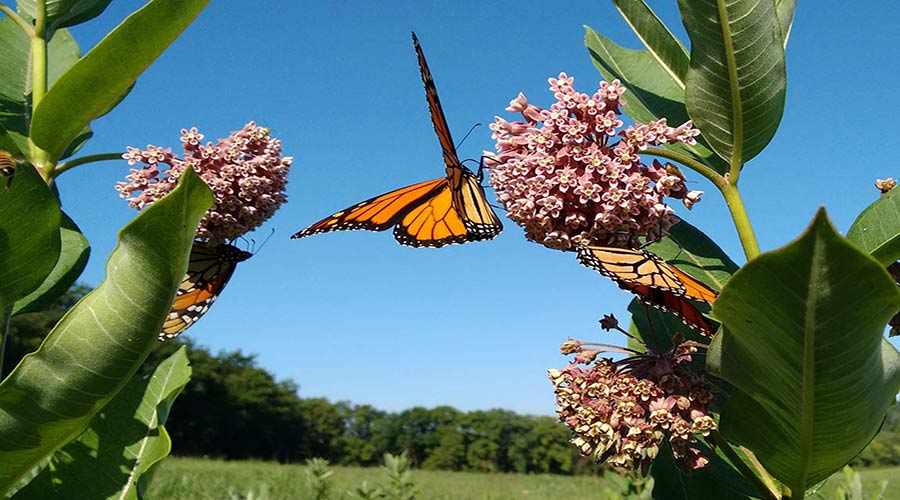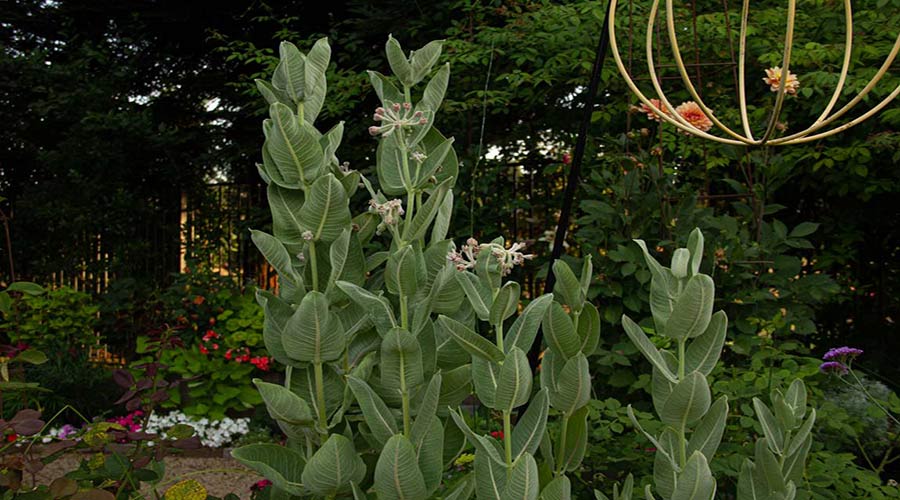Monarch butterflies are really special. If you see this bright caterpillar munching away, DO NOT HURT HIM! In a few days the caterpillar will develop into a bright beautiful monarch butterfly. Also note he is most likely munching away on a milkweed plant which is needed to sustain the monarch life cycle.
Who doesn’t love seeing butterflies?

Whether a flower gardener or not, who doesn’t love seeing butterflies? The two biggest ones in our garden are tiger swallowtails and the monarchs. Seeing them is fun and peaceful and a nice distraction from the weeds I’m pulling out.
The origin of monarch

The monarch is in the family Nymphalidae. It is considered to be one of the most beautiful butterflies, and maybe aptly named monarch as the king of butterflies. The male is slightly more orange, and the female is a little more yellow. Monarchs are attracted to various flowers for nectar, but they must have milkweed for their lifecycle. Eggs are only laid on milkweed, on the underside of younger leaves of the milkweed during spring and summer. When the caterpillars hatch they eat the milkweed which protects them from predators. The important milkweed habitat is disappearing largely because of human expansion and a lack of appreciation for the milkweed that often is taken for a weed and eliminated.
Monarch lifecycle

The monarch lifecycle and migration is a miracle of nature. The monarch goes through 4 generations in one year, it migrates 2500 miles during the year, and the 4th generation returns to the same grove of trees that its great grandparents left in the late winter. How do they know how to do that? In Feb or March the adult butterflies come out of hibernation, they mate and then head north or east to lay eggs in March or April. The eggs take about 4 days to hatch, and the striking yellow, white, and black caterpillar is fully grown in about 2 weeks. They then attach themselves to the underside of a horizontal surface and enter the pupa or chrysalis phase when they go through their metamorphosis over about 10 days into the beautiful butterflies we love. The adult butterfly lives for about 2-6 weeks.
This cycle continues and finally the 4th generation returns to the same area their great grandparents left and they live about 6 months, before the cycle starts over next year. If you live in California maybe you’ve visited Pacific Grove when thousands of Monarchs are folded up in the eucalyptus trees during their winter rest.
How to bring more monarch butterflies to the garden?

What can we do to bring more monarch butterflies to the garden? If you see these caterpillars, you likely have milkweed growing in your garden, either wild or most likely you planted it.

